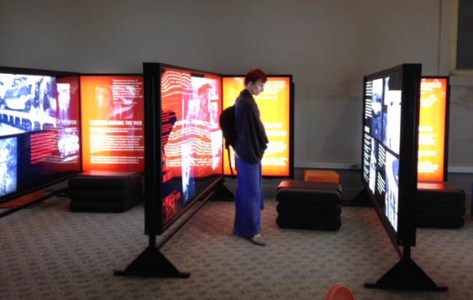
Leslie Unger, JANM’s Director of Marketing, reminisces about her professional encounters with the legendary photographer Nick Ut, who will be speaking at JANM on June 8.
Before coming to work at JANM, I worked for over 19 years at the Academy of Motion Picture Arts and Sciences (best known for presenting the Oscars), handling a variety of communications and media relations responsibilities. During my time there, I met Nick Ut of the Associated Press—one of the many, many photographers who lined the red carpet on Oscar night.
Shortly after meeting him, I learned that Nick had taken one of the most famous, iconic images in the history of photography, that of a young Vietnamese girl running toward the camera, her clothing burned from her body by napalm. I was astounded—and proud!—that I now knew this acclaimed photographer, and somewhat puzzled that the person who had captured an image that literally helped change the world was now taking pictures in the entertainment world.
I guess when you win a Pulitzer Prize at age 22 for a wartime image that is seared into the minds of millions, snapping some celebrity shots might be a welcome change. Not that Nick didn’t take this work seriously, but let’s face it: while red carpets may be full of battling egos, there are no napalm bombs getting dropped.

Each year after, when Nick would come by the press office during the days leading up to the Academy Awards, I would make sure I stopped what I was doing in order to say hello to him and, more importantly, make sure that new people working in the office knew who he was—that he had taken a photo that was truly historic. I wanted to make sure everyone knew about Nick and about that photo. He was always gracious during these introductions. I never knew him to be boastful of his accomplishments, but I felt he was rightfully proud and not embarrassed to be called out for them.
After I left the Academy, I went to work for the Pasadena Tournament of Roses Association. It didn’t occur to me that my path would cross with Nick’s there, but sure enough, it did. On the morning of a press conference to announce the year’s Royal Court, there was Nick. After smiles and hugs—typical of his warmth and friendly demeanor—I once again made sure that my co-workers knew exactly who Nick was.

I emailed Nick about what was happening in Ventura and was thrilled to receive a phone call from him that same day. We spoke for several minutes and he gave me the OK to share his contact info with the Ventura museum person. I did, but I’m sorry to say I don’t know what, if anything, came of the connection.
That was a little more than two years ago. Nick has since retired from the AP—in fact, he did so just recently. But he’s going to be at JANM on June 8 for a discussion about his life and career and you better believe I’m going to be there, too. I won’t have to tell anyone who Nick is—he’ll be telling them himself.










